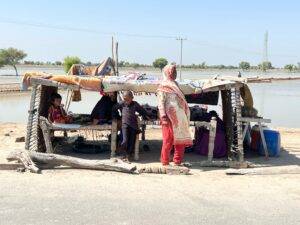
The floods of 2022 have brought to the fore so many governance matters. No matter how government of Pakistan hides behind climate change, changing weather patterns and all sorts of blaming ‘others’, the fact on the ground is 33 million citizens of Pakistan, have no standing homes, or schools, or health facilities or infrastructural safety networks when the heavens and earth decide to dance in anger.
Let’s step back and review our recent past.
In 2005, an earthquake took 87,000 precious lives and destroyed countless families. This brought our inadequate building practices into light. Did we rebuild with appropriate codes in place? Did we prevent hazardous settlements on mountainsides, or in the paths of landslides, stop soil erosion due to deforestation? Did we plan to reduce our population to ease the burden on mother earth and Pakistan. Did we reform our governance systems, so that governors heeded rules and regulations to safeguard citizens (voters) lives- if not our lands?
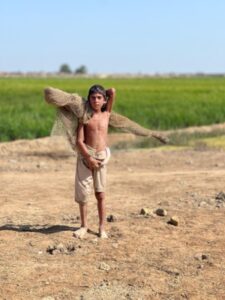
In 2010 the floods wreaked havoc across the Indus Plains. In its wake, it revealed the scale of human encroachments blocking waterways, and the dangers of (illegal) human settlements along the banks of the river. More insidious are the landlords who usurp fertile riverbanks to profit from cultivating cash crops, many of them also have personal armies which ‘protect’ these disaster red zones from law enforcement. Did we change this after the millions harmed and made more vulnerable? Land matters but lives matter more, or we at least we are taught this in theory.
The 18th amendment was passed in April 2010. A law which is supposed to strengthen democracy by transferring centralised powers to the provinces and onwards to the districts. The purpose of this devolution of powers was to empower citizens who could now directly influence spending and decisions to improve their lives. This never actually happened. Some powers were transferred to the provinces, making the chief minister a monarch leaving the district administrations at the mercy of politics of favour.
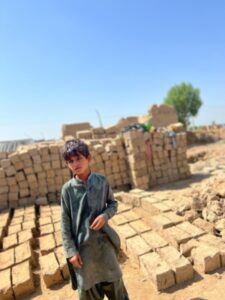
Let me put the question, when disasters occur, and they frequently have since 2010, do the provincial governments pick up the tab of the districts in distress? How can Lahore, Quetta, Karachi, Peshawar possibly respond adequately, when the resources are elsewhere? The insanity is plain to see.
Irrespective of the many trainings the United Nations conducted in 2010 for the provincial disaster management authorities or the district disaster management authorities (effectively the district coordination office), was a pointless endeavour, a waste of energy and resources. How so? If the administrative services are not systematically enabled to manage disasters how can a couple of trainings work? For example, something so very critical and obvious, do they have the information management systems connecting National Disaster Management Authority (August 2010 enacted by Parliament) (NDMA to Provincial Disaster management authority (PDMA) and the divisional districts, for knowledge management, to plan and make decisions which are efficient and accountable.
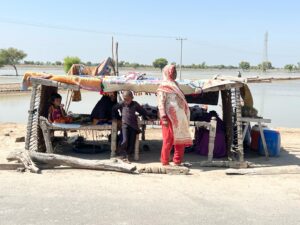
Pakistan harps about wanting to become an export-oriented economy to kick start a stagnant economy. What are these exports? How about making the essential items for saving lives inside Pakistan first. This is connected to our national security discussion. Our economic and national security policies need a serious rethink. Whose security are we designing policies around? Who is being protected for ‘national’ security? What is ‘national’? and subsequently, where are the national security expenditures going?
Pakistan is a climate change vulnerable country. Simultaneously, we are an equally criminally governed country that refuses to prepare its populous for resilience, against natural disasters or frankly manmade one’s too.
During my time at the national disaster management authority, in 2010-2012 there was a vulnerability mapping exercise undertaken with the assistance of multiple donors including the Japanese government, Italian and more. Every kind of vulnerability was identified in the 150 plus districts of Pakistan, earthquake, flooding, landslides, glacier melt, cyclones; red zoning of areas was suggested for mitigating life-threatening situations for population centers. We never implemented even one of those dangerous areas, barring Attabad Lake population.
In KP, the town of Balakot got flattened in 2005 and was declared a redzone where human settlement could not be maintained safely. A new town called new Balaot was procured developed and resettlement plots transferred to the surviving population; Guess what there was no enforcement and the surviving population returned to old dangerous Balakot.
The world bank has reported 24,000 schools have been destroyed in the floods of 2022. We still haven’t rebuilt the schools in Azad Kashmir /KP that were destroyed in the earthquake of 2005. Disasters that have destroyed the fragile social infrastructures in Pakistan are rarely completely rebuilt, let alone built back better more resiliently. Imagine the millions of children already out of school with no access to education; how is this country’s resilience supposed to be strengthened against climate change or become empowered capable citizens if there is no human development investments?
Political powers have protected those who own large land holdings in designated vulnerable areas and continue to obstruct safe zoning for natural and man made disasters. Compounding the vulnerability, government of Pakistan has not considered investing in health, education and modern infrastructure in these districts as a priority, whether climate change vulnerable or otherwise. As a nation we have not found it important to have a conversation about it. There are multiple reasons why the State does not educate its citizens; the poor are dependable vote banks- whether they vote or not. Invisible populations are less irritants.
There is a reason local governments have never materialised is that at the district level people making decisions to ensure their sewerage systems function, schools and health facilities exist in every town/village. Imagine populations do not need to migrate out of their villages, for the lack of opportunities at home. Imagine a governance system where the local authorities are accountable to the locally elected municipal authorities. Imagine a local government which can manage the initial rescue and relief without the armed forces or the international appeals! Or the central government in their privileges, begging for international assistance because they’ve spent the money owed to citizens welfare.
There is no harm in seeking international assistance, when natural or man-made disasters are overwhelming. There is no shame in asking our global friends. It is shameful when it becomes the only course of action in the absence of any semblance of responsibility for the welfare of your citizens. In terms of disaster management and disaster mitigation measures for resilience, Pakistan has failed its people every time. Let us not forget the cyclone of East Pakistan and what followed shortly after. We continue to learn nothing from our own histories, our inaction and lack of accountability to our citizens.
Some have already begun talking about reconstruction and rehabilitation in areas where the water has receded. In the absence of clear leadership for disaster management in Pakistan, the donor agencies will come up with a blueprint of solutions. This is not their fault per se, the governance structures of this country do not facilitate or expect accountability to citizen’s needs.
Housing reconstruction for example, will they consider local pro poor non engineering design options? In these areas there is little to no electricity to speak of, nor sanitation sewerage systems, or water conservation culture or systems; therefore, building safe homes, in safe green zones must offer designs of resilient cheap adobe (mud block) homes, with indoor mandatory sanitation, with green safe drinking water infrastructure. The displaced must be resettled in safe zoned areas, will they? This is no easy task. We didn’t do it in 2010, will we learn from that mistake?
This is an opportunity to develop planned towns. Safer stronger communities. But the push back and the easy solutions are convenient for a political leadership distracted by who stays in the prime minister’s office. Millions of vulnerable Pakistanis remain hostage to decisions made at levels where the reality of life is a distant soundbite or an image; they only see to seek funds. The heart is not where the purse is nor where mitigation policies should be.
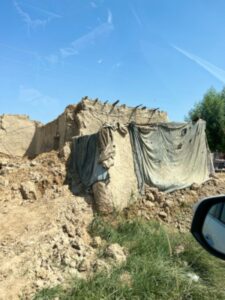
The COP27 is coming up soon. Government officials are getting ready to attend another foreign junket. What is the plan that government of Pakistan will offer the climate change adaption community? What will the conversation include other than, please give us reparations for first world emissions?
If we do not include a signed commitment with a plan of action that devolves political and financial powers to the district administrations, rest assured any climate reparations to Pakistan, will fall in the black hole of everything else. COP may not be a donor platform, but it is a forum where our climate adaptation plans are sound boarded. Pakistan’s governance mechanism is at the root cause of citizens vulnerability.
It is deeply troubling to write these thoughts, the political will to prioritise the 220million citizens welfare delivery systems, needs to be visibly in play; thereafter, and simultaneously, the bureaucracy must begin its own reform. We must have capable able and trained service delivery public servants. It is not the other way around. About 70% of this country’s citizens are dependent on public (servants )service delivery mechanisms as their only source of relief.
The question of the elephant in the room must be tackled if there is no self-realization. In either instance, the climate change reality will impact Pakistanis disproportionately because the state of Pakistan has yet to realise what is Pakistan without Pakistanis.
Let’s step back and review our recent past.
In 2005, an earthquake took 87,000 precious lives and destroyed countless families. This brought our inadequate building practices into light. Did we rebuild with appropriate codes in place? Did we prevent hazardous settlements on mountainsides, or in the paths of landslides, stop soil erosion due to deforestation? Did we plan to reduce our population to ease the burden on mother earth and Pakistan. Did we reform our governance systems, so that governors heeded rules and regulations to safeguard citizens (voters) lives- if not our lands?

In 2010 the floods wreaked havoc across the Indus Plains. In its wake, it revealed the scale of human encroachments blocking waterways, and the dangers of (illegal) human settlements along the banks of the river. More insidious are the landlords who usurp fertile riverbanks to profit from cultivating cash crops, many of them also have personal armies which ‘protect’ these disaster red zones from law enforcement. Did we change this after the millions harmed and made more vulnerable? Land matters but lives matter more, or we at least we are taught this in theory.
The 18th amendment was passed in April 2010. A law which is supposed to strengthen democracy by transferring centralised powers to the provinces and onwards to the districts. The purpose of this devolution of powers was to empower citizens who could now directly influence spending and decisions to improve their lives. This never actually happened. Some powers were transferred to the provinces, making the chief minister a monarch leaving the district administrations at the mercy of politics of favour.

Let me put the question, when disasters occur, and they frequently have since 2010, do the provincial governments pick up the tab of the districts in distress? How can Lahore, Quetta, Karachi, Peshawar possibly respond adequately, when the resources are elsewhere? The insanity is plain to see.
Irrespective of the many trainings the United Nations conducted in 2010 for the provincial disaster management authorities or the district disaster management authorities (effectively the district coordination office), was a pointless endeavour, a waste of energy and resources. How so? If the administrative services are not systematically enabled to manage disasters how can a couple of trainings work? For example, something so very critical and obvious, do they have the information management systems connecting National Disaster Management Authority (August 2010 enacted by Parliament) (NDMA to Provincial Disaster management authority (PDMA) and the divisional districts, for knowledge management, to plan and make decisions which are efficient and accountable.
Where are the funds to store the essential items for initial response in a disaster situation? Are government godowns full or empty? For example, in 2005 Pakistan did not have enough tents for the displaced citizens. To keep them safe and secure; the private sector or government did not produce the quality needed locally this continued through 2010 and even in 2022. We continue to procure with foreign currency we do not have, for essential goods for human survival or wait for aid from China America etc. TENTS.

Pakistan harps about wanting to become an export-oriented economy to kick start a stagnant economy. What are these exports? How about making the essential items for saving lives inside Pakistan first. This is connected to our national security discussion. Our economic and national security policies need a serious rethink. Whose security are we designing policies around? Who is being protected for ‘national’ security? What is ‘national’? and subsequently, where are the national security expenditures going?
Pakistan is a climate change vulnerable country. Simultaneously, we are an equally criminally governed country that refuses to prepare its populous for resilience, against natural disasters or frankly manmade one’s too.
During my time at the national disaster management authority, in 2010-2012 there was a vulnerability mapping exercise undertaken with the assistance of multiple donors including the Japanese government, Italian and more. Every kind of vulnerability was identified in the 150 plus districts of Pakistan, earthquake, flooding, landslides, glacier melt, cyclones; red zoning of areas was suggested for mitigating life-threatening situations for population centers. We never implemented even one of those dangerous areas, barring Attabad Lake population.
In KP, the town of Balakot got flattened in 2005 and was declared a redzone where human settlement could not be maintained safely. A new town called new Balaot was procured developed and resettlement plots transferred to the surviving population; Guess what there was no enforcement and the surviving population returned to old dangerous Balakot.
The world bank has reported 24,000 schools have been destroyed in the floods of 2022. We still haven’t rebuilt the schools in Azad Kashmir /KP that were destroyed in the earthquake of 2005. Disasters that have destroyed the fragile social infrastructures in Pakistan are rarely completely rebuilt, let alone built back better more resiliently. Imagine the millions of children already out of school with no access to education; how is this country’s resilience supposed to be strengthened against climate change or become empowered capable citizens if there is no human development investments?
Political powers have protected those who own large land holdings in designated vulnerable areas and continue to obstruct safe zoning for natural and man made disasters. Compounding the vulnerability, government of Pakistan has not considered investing in health, education and modern infrastructure in these districts as a priority, whether climate change vulnerable or otherwise. As a nation we have not found it important to have a conversation about it. There are multiple reasons why the State does not educate its citizens; the poor are dependable vote banks- whether they vote or not. Invisible populations are less irritants.
There is a reason local governments have never materialised is that at the district level people making decisions to ensure their sewerage systems function, schools and health facilities exist in every town/village. Imagine populations do not need to migrate out of their villages, for the lack of opportunities at home. Imagine a governance system where the local authorities are accountable to the locally elected municipal authorities. Imagine a local government which can manage the initial rescue and relief without the armed forces or the international appeals! Or the central government in their privileges, begging for international assistance because they’ve spent the money owed to citizens welfare.
There is no harm in seeking international assistance, when natural or man-made disasters are overwhelming. There is no shame in asking our global friends. It is shameful when it becomes the only course of action in the absence of any semblance of responsibility for the welfare of your citizens. In terms of disaster management and disaster mitigation measures for resilience, Pakistan has failed its people every time. Let us not forget the cyclone of East Pakistan and what followed shortly after. We continue to learn nothing from our own histories, our inaction and lack of accountability to our citizens.
Some have already begun talking about reconstruction and rehabilitation in areas where the water has receded. In the absence of clear leadership for disaster management in Pakistan, the donor agencies will come up with a blueprint of solutions. This is not their fault per se, the governance structures of this country do not facilitate or expect accountability to citizen’s needs.
Housing reconstruction for example, will they consider local pro poor non engineering design options? In these areas there is little to no electricity to speak of, nor sanitation sewerage systems, or water conservation culture or systems; therefore, building safe homes, in safe green zones must offer designs of resilient cheap adobe (mud block) homes, with indoor mandatory sanitation, with green safe drinking water infrastructure. The displaced must be resettled in safe zoned areas, will they? This is no easy task. We didn’t do it in 2010, will we learn from that mistake?
This is an opportunity to develop planned towns. Safer stronger communities. But the push back and the easy solutions are convenient for a political leadership distracted by who stays in the prime minister’s office. Millions of vulnerable Pakistanis remain hostage to decisions made at levels where the reality of life is a distant soundbite or an image; they only see to seek funds. The heart is not where the purse is nor where mitigation policies should be.

The COP27 is coming up soon. Government officials are getting ready to attend another foreign junket. What is the plan that government of Pakistan will offer the climate change adaption community? What will the conversation include other than, please give us reparations for first world emissions?
If we do not include a signed commitment with a plan of action that devolves political and financial powers to the district administrations, rest assured any climate reparations to Pakistan, will fall in the black hole of everything else. COP may not be a donor platform, but it is a forum where our climate adaptation plans are sound boarded. Pakistan’s governance mechanism is at the root cause of citizens vulnerability.
It is deeply troubling to write these thoughts, the political will to prioritise the 220million citizens welfare delivery systems, needs to be visibly in play; thereafter, and simultaneously, the bureaucracy must begin its own reform. We must have capable able and trained service delivery public servants. It is not the other way around. About 70% of this country’s citizens are dependent on public (servants )service delivery mechanisms as their only source of relief.
The question of the elephant in the room must be tackled if there is no self-realization. In either instance, the climate change reality will impact Pakistanis disproportionately because the state of Pakistan has yet to realise what is Pakistan without Pakistanis.

